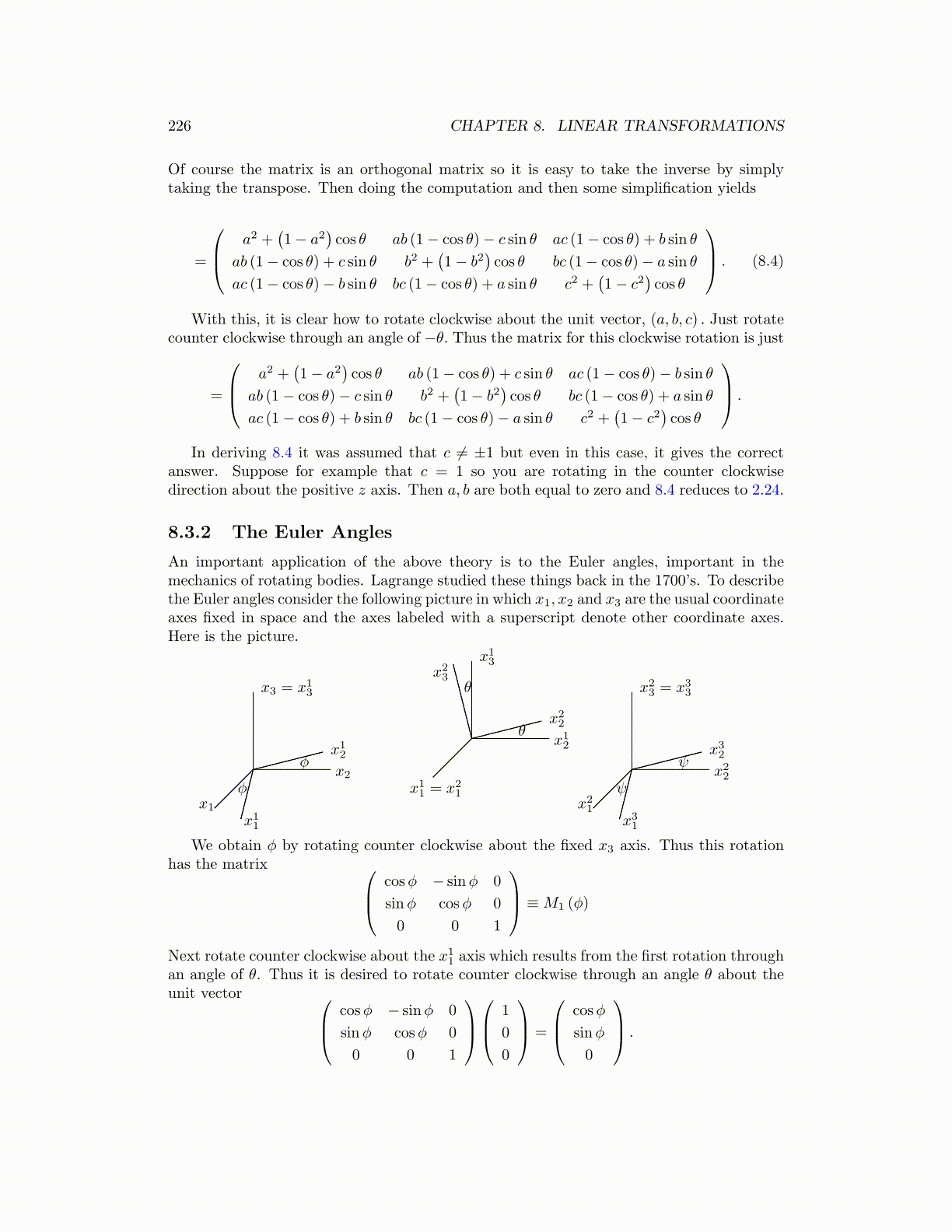
226 CHAPTER 8. LINEAR TRANSFORMATIONS
Of course the matrix is an orthogonal matrix so it is easy to take the inverse by simplytaking the transpose. Then doing the computation and then some simplification yields
=
a2 +(1− a2
)cos θ ab (1− cos θ)− c sin θ ac (1− cos θ) + b sin θ
ab (1− cos θ) + c sin θ b2 +(1− b2
)cos θ bc (1− cos θ)− a sin θ
ac (1− cos θ)− b sin θ bc (1− cos θ) + a sin θ c2 +(1− c2
)cos θ
. (8.4)
With this, it is clear how to rotate clockwise about the unit vector, (a, b, c) . Just rotatecounter clockwise through an angle of −θ. Thus the matrix for this clockwise rotation is just
=
a2 +(1− a2
)cos θ ab (1− cos θ) + c sin θ ac (1− cos θ)− b sin θ
ab (1− cos θ)− c sin θ b2 +(1− b2
)cos θ bc (1− cos θ) + a sin θ
ac (1− cos θ) + b sin θ bc (1− cos θ)− a sin θ c2 +(1− c2
)cos θ
.
In deriving 8.4 it was assumed that c ̸= ±1 but even in this case, it gives the correctanswer. Suppose for example that c = 1 so you are rotating in the counter clockwisedirection about the positive z axis. Then a, b are both equal to zero and 8.4 reduces to 2.24.
8.3.2 The Euler Angles
An important application of the above theory is to the Euler angles, important in themechanics of rotating bodies. Lagrange studied these things back in the 1700’s. To describethe Euler angles consider the following picture in which x1, x2 and x3 are the usual coordinateaxes fixed in space and the axes labeled with a superscript denote other coordinate axes.Here is the picture.
ϕ
ϕ
x3 = x13
x1x11
x2
x12
θ
θ
x13x23
x11 = x21
x12
x22
ψ
ψ
x23 = x33
x21x31
x22
x32
We obtain ϕ by rotating counter clockwise about the fixed x3 axis. Thus this rotationhas the matrix cosϕ − sinϕ 0
sinϕ cosϕ 0
0 0 1
≡M1 (ϕ)
Next rotate counter clockwise about the x11 axis which results from the first rotation throughan angle of θ. Thus it is desired to rotate counter clockwise through an angle θ about theunit vector cosϕ − sinϕ 0
sinϕ cosϕ 0
0 0 1
1
0
0
=
cosϕ
sinϕ
0
.